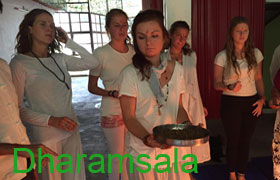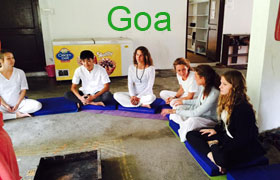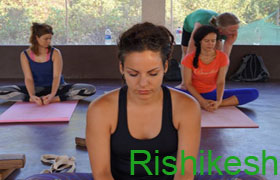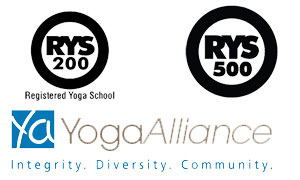How to practice Asthanga Yogasana
Start with a warm up
Standing up in Samasthithih while chanting the mantra and then continuing with Suryanamaskara is the first action which is practiced conventionally. But it is better to start up with a few warm up workouts instead of directly jumping to suryanamaskara. Because, it might be daunting, psychologically in particular, which is often caused due to the trying for perfection in the first go. Simple warm up exercises like bending knees, stepping back slightly can prepare your body for more intense workouts than directly attempting to jump or full bends. Warm up exercises actually improves the efficiency of suryanamaskara as they would prepare your body to bend and stretch with more ease and flexibility. Moreover stretching your body before the actual workout makes it active and induces motivation. Uddiyana bandha and nauli kriya are the most popularly practiced warm up exercises. You may feel free to try and experiment with new routines.
Alignment
Alignment is the capability to attain equilibrium among the varied states of the body and the mind such that the work in synchronization. You should try to improve your ability to stay straight and relaxed in a posture. However, your body has its own limits when it comes to flexibility in stretching. Thus, one should take care to see that alignment does not impose any undue pressure on one’s body. Otherwise, it is a clear implication that your body is being pushed too much. Your breath directly indicates your ease of alignment. If your breath becomes totally unrestricted in any posture, then you are said to be in the most possible natural alignment with that posture for that moment irrespective of the way it looks.
It takes a great deal of persistent practice and learning to absolutely stop pushing and persuade an open behaviour. Simply follow the signals from your body and breathe if you encounter any dubiousness in regard to correct alignment. Don’t be worried even if it seems to be contradictory to the external advices. However, what is actually happening may vary to a large extent from the perspective of a student. Hence the role of a teacher in illustrating these differences is inevitable in such scenarios. To support the evolution of awareness, take care not to not to go against your breath. Try to be active along with attempting to be relaxed in each posture.
It is a big mistake to force alignment on your body forcibly. Your body will naturally have limits on extending and stretching itself. You must make a continuous effort to extend beyond these limits without exerting excess pressure over self. Accept the capabilities and limits of your body and give it enough time to improve its flexibility.
Although there is no hard rule which dictates the correctness of alignment. It changes from person to person. Correctness of alignment is unique to each person. Forcing your body into perfect alignment disregarding any signals from the body could be highly dangerous and damaging. To achieve alignment in proper sense, body and mind need to communicate with each other effectively. So don’t enforce change on self, but allow it to happen naturally.




